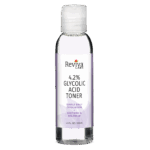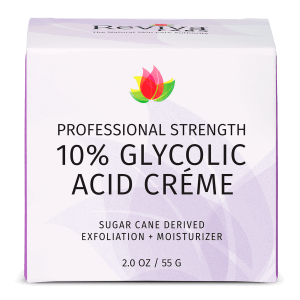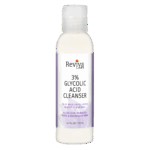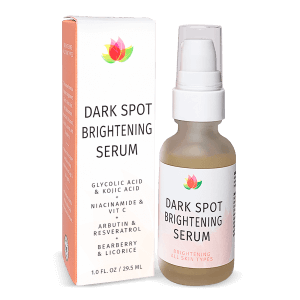Clean Beauty, Ingredients, Reviva Labs, Skin Care
How Glycolic Acid Transforms Skin Over Time
There are ingredients that fade into the background and there are ingredients that change skin. Glycolic acid belongs in the second category. It doesn’t just exfoliate. It alters the texture, clarity, and tone of skin. Over time, it can visibly transform dull, uneven, rough, or breakout-prone skin into something smoother and more resilient. For many, glycolic acid becomes a mainstay in their skincare lineup because the results don’t plateau. They build.
It isn’t the newest skincare acid, but its popularity has held strong for a reason. That reason is efficacy. Glycolic acid works. And it works well.
What Makes Glycolic Acid Unique
Glycolic acid is the smallest molecule in the alpha hydroxy acid (AHA) family. That matters. Because it’s so small, glycolic acid penetrates the skin more deeply and quickly than other acids in its class. It doesn’t just loosen the bonds that hold dead skin cells together on the surface. It can reach into the upper layers of the epidermis and initiate change there too.
Derived from sugar cane, glycolic acid is water-soluble and naturally hydrophilic. It attracts moisture, even while exfoliating, which helps limit the risk of the tightness or dryness that often comes with exfoliating acids. That dual action—removal of the old and replenishment with moisture—is what makes glycolic acid stand apart.
How Glycolic Acid Works Over Time
Most people notice a visible difference within the first few weeks of consistent use. That early shift is typically about texture. Skin feels smoother. Makeup applies more evenly. Pores look less obvious. But that’s just the beginning.
With continued use, glycolic acid stimulates cellular turnover. This means fresh, new skin cells move to the surface more quickly. When that happens, the skin begins to appear more radiant and even-toned. It also helps reduce the buildup that contributes to clogged pores, blackheads, and whiteheads.
At a deeper level, glycolic acid can support the skin’s natural production of collagen. Multiple studies have shown this effect. In one study published in the Journal of Dermatologic Surgery, patients using 10% glycolic acid for 12 weeks showed increased epidermal thickness and dermal density—a marker of collagen growth.
That collagen support is key in long-term transformation. With time, fine lines look softer. Skin feels firmer. Even early signs of sagging can appear less noticeable.
Who Benefits Most from Glycolic Acid
While almost anyone can benefit from glycolic acid with the right formula and concentration, certain skin concerns see the biggest improvements.
People with rough or textured skin often see rapid changes. That’s because glycolic acid lifts the layers of compacted cells that make the skin feel bumpy or coarse. It essentially reveals a fresher, smoother surface. Acne-prone skin also benefits. By keeping the pores clear and reducing the debris that bacteria thrive on, glycolic acid can decrease the frequency of breakouts.
Those dealing with hyperpigmentation, dark spots, or melasma may notice gradual fading of discoloration with consistent use. Glycolic acid doesn’t bleach the skin. Instead, it speeds up the removal of pigment-filled cells and encourages new, evenly pigmented cells to replace them.
Even mature skin, often more fragile and in need of collagen support, can benefit—but only when the product is formulated at an appropriate strength and paired with hydrating, soothing ingredients. Older skin typically has a slower cell turnover rate. Glycolic acid helps reinvigorate that process.
Reviva Labs' Glycolic Acid Superstars
Why Product Formulation Matters
Not all glycolic acid products are created equally. The concentration, pH, and supporting ingredients all impact the results. Most over-the-counter products range from 3% to 10%. For beginners or sensitive skin types, starting at the lower end helps avoid irritation.
The pH of the formula also plays a role. Glycolic acid is most active at a lower pH, but too low can trigger sensitivity or inflammation. That’s why well-formulated glycolic acid products walk a fine line—balancing potency with gentleness. Buffered acids and time-release technology can also reduce the risk of stinging or redness.
Pairing glycolic acid with soothing ingredients like aloe vera, natural oils or hyaluronic acid makes it more suitable for regular use. These additions help replenish the moisture barrier and minimize disruption.
How to Add Glycolic Acid into a Routine
Start slow. Two to three times per week is often enough for most skin types in the beginning. As your skin adjusts, frequency can be increased, but daily use isn’t necessary for everyone. More important is consistency over time.
Avoid using glycolic acid at the same time as other strong actives like retinoids or vitamin C unless a product is specifically formulated to combine them. Doing so can lead to irritation, peeling, or sensitivity.
And always apply sunscreen during the day. Glycolic acid can increase the skin’s sensitivity to the sun. Without proper protection, the risk of sunburn and hyperpigmentation rises.
Visible Results and the Science Behind Them
The transformation that glycolic acid can produce isn’t just cosmetic. It’s structural. One 2005 study found that glycolic acid treatments increased both epidermal thickness and viable epidermal cell numbers after consistent application. This reinforces what many people experience: not just smoother skin, but stronger skin.
In terms of brightness and pigmentation, glycolic acid promotes exfoliation, which improves light reflection on the skin’s surface. That creates a more luminous look. Dark patches fade gradually, especially when glycolic acid is used alongside ingredients like niacinamide or licorice extract.
For acne-prone skin, glycolic acid reduces the number of comedones and prevents new ones from forming by keeping the follicle opening clear. According to a review in Clinical, Cosmetic and Investigational Dermatology, AHAs like glycolic acid are helpful in treating both non-inflammatory and inflammatory acne lesions.
Long-Term use of Glycolic Acid
Glycolic acid works best when treated as part of a long game. It’s not a quick fix. But with steady use, the results accumulate. Skin texture improves. Tone becomes more even. Fine lines and dullness start to fade. If irritation occurs, reduce frequency instead of quitting altogether. Skin often needs time to adjust to active ingredients. Using a gentle cleanser and moisturizer can also help offset any dryness.
Products containing glycolic acid can include toners, serums, creams, masks, and even cleansers. Which one to choose depends on your skin goals. For quick exfoliation and brightness, a toner or serum may be ideal. For hydration and overnight resurfacing, a glycolic night cream may work better. The key is to monitor how your skin responds and adjust your routine accordingly.
Full Episode: What Does Glycolic Acid Really Do for Your Skin? We Break It Down – by Reviva Labs
Frequently Asked Questions
How long does it take to see results from glycolic acid?
Most people notice smoother skin in two to three weeks. Improvements in discoloration and fine lines may take eight to twelve weeks with consistent use.
Can I use glycolic acid every day?
Some can, but not everyone should. Start with two to three times a week and adjust based on your skin’s tolerance. Daily use may be too much for sensitive or dry skin.
Is glycolic acid safe for sensitive skin?
Yes, but choose lower concentrations and look for formulas with soothing ingredients. Always patch test first.
What’s the best time to apply glycolic acid?
Evening is best. Nighttime application minimizes sun exposure risks and allows the skin to renew while you sleep.
Can glycolic acid be used with other acids?
It depends. Avoid layering multiple acids unless they’re combined in a single product designed for that purpose. Overlapping strong exfoliants can lead to irritation.

